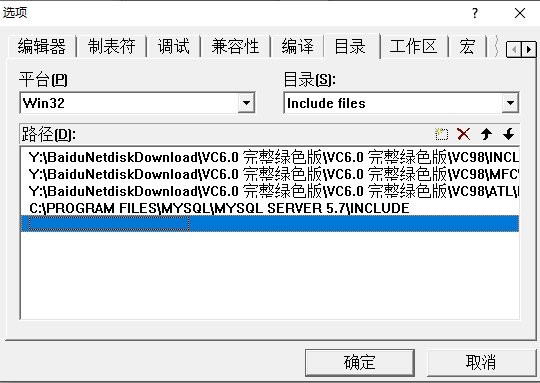HDU 5671 Matrix
题目链接:http://acm.hdu.edu.cn/showproblem.php?pid=5671
题目大意:给你一个n行m列的矩阵
进行四种操作 交换x与y行
交换x列与y列
给x行都加上y
给x列都加上y
输出进行操作后的矩阵
解题思路:一开始想用二维树状数组做,后来发现并不用,因为每次都是一行一列加,所以用两个数组保存行列加的值就可以了
一共开四个数组 hang[]表示当前矩阵第i行是最初矩阵的hang[i]行
lie[]表示当前矩阵i列是最初矩阵的lie[i]列
初始值 hang[1]=1 hang[2]=2 hang[3]=3
比如说交换 1 2 行 再交换 2 3 行
那么hang[1]=2 hang[2]=3 hang[3]=1
也就是说相对于一开始 第一行在1,第二行在2,第三行在3。
现在在第一行的是最初的第二行,现在在第二行的是最初的第三行,现在在第三行的是最初的第一行
hangpoi[]用来记录给最初矩阵某一行加上了多少
liepoi[]用来记录给矩阵某一列加上了多少
一般给x行加上y就是这样
hangpoi[hang[x]]+=y
因为题目想要加上y的是第x行,而我们知道当前的第x行其实是最初的矩阵的第hang[x]行,我们要记录给最初矩阵加上多少。
最后输出时候我们知道i行j列
是最初矩阵的a[hang[i] ][ lie[j] ]列,最初矩阵的i行加上了hangpoi[hang[i]],最初矩阵的j列加上了liepoi[lie[j]]
#include <vector>#include <list>#include <map>#include <set>#include <deque>#include <queue>#include <stack>#include <bitset>#include <algorithm>#include <functional>#include <numeric>#include <utility>#include <sstream>#include <iostream>#include <iomanip>#include <cstdio>#include <cmath>#include <cstdlib>#include <cstring>#include <ctime>#include <cassert>#define RI(N) scanf("%d",&(N))#define RII(N,M) scanf("%d %d",&(N),&(M))#define RIII(N,M,K) scanf("%d %d %d",&(N),&(M),&(K))#define mem(a) memset((a),0,sizeof(a))using namespace std;const int inf=1e9;const int inf1=-1*1e9;typedef long long LL;int a[1005][1005];int main(){int t;RI(t);while(t--){int n,m,q;RIII(n,m,q);for(int i=1; i<=n; i++)for(int j=1; j<=m; j++){RI(a[i][j]);}int hang[1005];int hangpoi[1005];int lie[1005];int liepoi[1005];for(int i=1; i<=n; i++)hang[i]=i;for(int j=1; j<=m; j++)lie[j]=j;mem(hangpoi);mem(liepoi);for(int i=0; i<q; i++){int a,x,y;RIII(a,x,y);if(a==1){swap(hang[x],hang[y]);}if(a==2){swap(lie[x],lie[y]);}if(a==3){hangpoi[hang[x]]+=y;}if(a==4){liepoi[lie[x]]+=y;}}for(int i=1; i<=n; i++){for(int j=1; j<m; j++){printf("%d ",a[hang[i]][lie[j]]+hangpoi[hang[i]]+liepoi[lie[j]]);}printf("%d\n",a[hang[i]][lie[m]]+hangpoi[hang[i]]+liepoi[lie[m]]);}}return 0;



































还没有评论,来说两句吧...